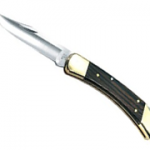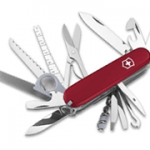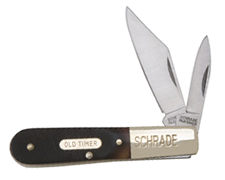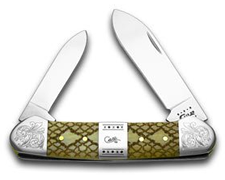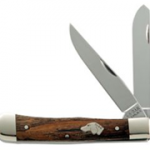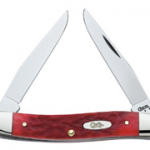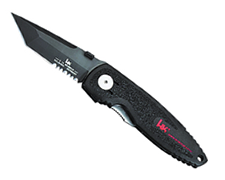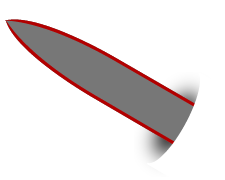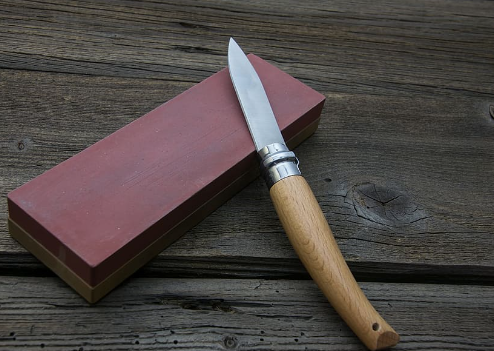How to Choose a Pocket Knife – Pocket Knife Buying Guide 2023
That’s why I’ve put together this comprehensive Pocket Knife Buyer’s Guide for 2023. I want to share my personal experiences and insights, helping you navigate the vast landscape of pocket knives and make an informed decision when selecting your next go-to blade.
In this guide, we’ll dive deep into the world of pocket knives, exploring different styles, features, and factors that can make all the difference in finding the perfect companion for your needs. From compact and discreet designs to robust and multi-functional tools, we’ll cover it all. So, whether you’re a seasoned adventurer looking to upgrade your gear or someone new to the world of pocket knives, this guide has got you covered.
Before we dive in, let me share a little bit about my own journey with pocket knives. I’ve always been an avid explorer, venturing into the great outdoors whenever possible. Over the years, I’ve come to appreciate the convenience and utility of a reliable pocket knife. It has saved the day on camping trips, helped me with various tasks while hiking, and even served as a handy tool in everyday situations.
Are you ready to dive in? Great! Let’s get started on this exciting exploration of pocket knives and find the ideal blade that will become your reliable companion in all your future adventures.
Table of Contents
How to Choose a Pocket Knife | Knife Buyer’s Guide
There are many different types of blade shapes, blade combinations, blade types, handle shapes, different blade materials, and knife models. The question is, what to buy? With our ultimate pocket knife buyer’s guide, we hope to assist you in your choice and help show you the difference between a trapper and a stockman.
Even to the extent of telling the difference between what a clip point is and what a drop point blade is. What does a handle made from G10 mean and what is a handle that is made from bone? After our guide, we are confident that you will be able to decide on the perfect pocket knife for you.
Types of Pocket Knives
Single Blade
They vary from a Simplified collection to a more complex selection as well. Much older collector’s knives are singled blade knives, even the timeless classics are single blades as well such as the Buck 110BRS Knife.
Multi-Blade
In some cases, you may need a larger blade and in other cases, you may need a smaller blade. But it surely does make sense to have a few options.
Multi-Tool
To name a few things that you might find in a multi-tool pocket knife include your basic blade, a bottle cap opener, a miniature saw, a steel toothpick, a set of pliers, scissors, a file, and a hook.
These types of knives are considered multi-tool pocket knives. If you are looking for these, we recommend you read our review on the Victorinox Swiss Army Climber II Pocket Knife and read our cool pocket knife guide.
Pocket Knife Models
Stockman
This type of knife is good for a number of daily adventures, and simply put, you won’t go wrong with a stockman folding knife. They are cool, we have mentioned plenty of models in our cool pocket knives guide here.
Barlow
These knives have been mentioned by Mark Twain, and this type of knife style has been around for a great number of years, not to mention that there are four different types of Barlow families. They all claim that they had invented this type of knife style. This knife can date its history back to the early 1700s and 1800s.
Congress
These types of knives usually have 2 or 4 blades. The two-blade version is a lot more popular than the four-bladed version. This is due to the fact that these are much slimmer as compared to the four-blade version and they have a sheep foot and pen blade.
Canoe
These knives make their history which can date back to the early 1900s. But some can say that it dates back earlier.
Elephants Foot
This ergonomic design not only offers exceptional grip and control but also pays homage to the grace and power of these magnificent animals. Made from premium materials, such as high-grade stainless steel and durable polymers, the Elephants Foot knife is built to withstand the harshest conditions, ensuring reliability and longevity in any outdoor pursuit.
Trapper
The long clip blade is also great for all the tasks you may need to use around the campsite. This type of knife will come in for use in your day-to-day activities and needs. We recommend you read out the best-assisted opening knives guide on these.
Muskrat
The Muskrat pocket knife, a compact masterpiece of versatility and elegance, has become a beloved companion for those seeking a reliable tool for everyday carry. With its sleek design and practical functionality, this pocket knife is a testament to the ingenuity and craftsmanship of its creators.
The Muskrat’s dual-blade configuration, resembling the sleekness of the aquatic creature it is named after, offers a range of cutting options for various tasks. It’s compact size and lightweight construction makes it ideal for slipping into pockets or packs, ensuring convenience and accessibility whenever a dependable cutting tool is required.
Camper
Even a can and bottle opener is present. These tools also double up as a flathead screwdriver and even an awl. With this multi-use tool, there are a wide array of variations of this knife. A well-known example is the Swiss Army Knife.
Hunter
These types of knives are particularly used for skinning and gutting. These hunting knives, were always fixture knives, without a folding mechanism. But then after the Buck 110 series came into production, it changed the way we use knives, making the hunter able to own a folding knife that had a strong locking mechanism, and an all-around portability for EDC. The Kershaw 1660 Ken Onion Leek Folding Knife is a great hunter knife compact and durable.
Tactical
People you would find using these knives are First Responders to emergency situations, such as Military personnel, Policemen, for various emergencies or even close combat situations.
These types of knives are generally made from the toughest materials available in the market. And also sport a vast amount of features that are built into them. These features range from, one-handed opening systems, to even seat belt cutters. This knife is great for anyone who may need a strong knife for self-defence and protection, we recommend the Spyderco Byrd Cara Cara2.
Pocket Knife Blade Shapes
Straight Back
The design, in turn, creates a strong base with a dull back end, which then enables the knife’s user to put more pressure on the back of the knife making it a great tool for chopping and slicing purposes.
Clip Point
The cutting edge of the blade is also curved towards the tip. Some of these clip-point blades might have a longer curve, which then makes it fantastic for greater detailed work with a thinner knife blade. But the only downside of this is that the blade can be weaker due to it being thinner. Due to its sleek blade, it is employed in making several artefacts which require intricate detailing and design.
Drop Point
Most survival knives and hunting knives have drop-point blades. The clip point blade is sharper than the drop point but the drop point sports a wider tip which provides it substantial cutting control. A drop-point knife can be employed for several days to day purposes and is an extremely efficient tool in case of emergencies.
Spear Point
These obvious advantages would be, sharpening both edges for maximum penetration. These types of blades have various thicknesses. The thicker blades won’t penetrate as well as the thinner blades but are much better for heavy knife usage.
Sheep’s Foot
These particular types of blades are fantastic for slicing and cutting this is due to the wider blade. This blade is also a lot safer because of its duller point.
The sheep’s foot blade is great for anyone who may be clumsy, this is done because they increase the risk that its user will stab themselves during use. Like the tactical knives, these are great for emergency response teams that may need to cut clothing off of victims or seatbelts that they are assisting.
The dull point hick makes it a lot safer and less likely to stab a person they need to help when time is of the essence. They are extremely useful for camping and hunting purposes and are utilized by several knife enthusiasts every day.
Pen Blade
This blade is specifically designed for sharpening quill pens. This is where the name derives from. The pen shape of the blade is quite similar to the spear point.
This blade is not only known for its being very sharp but also comes in very useful for small everyday tasks. It’s high portability and high tensile strength make it a coherent tool that should be owned by anyone and everyone.
Spey Blade
The spey blade has remained throughout history and has been used for several years. These are also great blades for skinning animals or for any user who does not want to have a sharp point. The Benchmade Griptilian is a good example of a Spey blade pocket knife.
Pocket Knife Blade Material
Stainless Steel
Stainless steel is no stranger to quality and strength and is extremely common in knife blades. However, the steel found in the blade creation is not always 100 per cent stainless steel. There is always a degree of chromium added to the blade to help increase the overall hardness.
It is a rule of thumb that blades with less than 12 per cent chromium are more considered “Stainless”. These Stainless blades are great for a multitude of uses ranging from outdoor to survival or camping.
This is because of their resistance to corrosion and water resistance and it is easy to sharpen these blades more than others. Stainless steel knives like the Benchmade 940 Osborne are one of the most tensile materials used to make different varieties of knives today.
Carbon Steel
This type of steel uses a high level of carbon in its production. Carbon steel knives are particularly great for heavier knife usage and hunting. The steel used is a lot harder than stainless steel. This helps it keep its edge longer and also able to keep its edge longer. A lot of the time hunting knives are made from this material.
High Carbon Stainless Steel: The material used in this, that is carbon helps to make the blade even harder than normal stainless steel and also helps it to keep its edge longer. The stainless steel that is used helps to keep the blade from rusting and in turn simplifies things by making it easier to sharpen.
With this mixture of carbon and stainless steel, the user receives the best of both worlds. Thus, this type of steel has a much higher level of carbons used in its manufacturing process. This creates a blade that gets more benefits from both types of materials used in it.
Damascus
Damascus is a type of steel that is very unique. Blades crafted from this material is made by a process called forging. Two different types of steel are forged together, then acid is used to create etching.
The acid process reacts in a way that is very different from the rest. The two plates of steel merge and create a different colour and depth. Damascus is well known for how beautiful it is and is quite loved by collectors of knives. These blades are crafted for aesthetic purposes or for high performance in mind.
The other major difference in the look of the blade is the patterns that the materials make when welded together. These designs come into being in a random order, which can be anything from stars or lines and many other designs. This Damascus draws its name from a city in Syria.
Further east in Japan Damascus was used to craft the blades of honourable Samurai swords. These blades were introduced into the American industry in the 1970s
Pocket Knife Lock Types
Liner Lock
The Liner locking system is the most common locking type in the pocket knife market today. The locking system works by having one side of the liner on the handle, Curved towards the knife blade.
When the blade is deployed fully the end of the lock clicks into place underneath the blade such that this then effectively locks the blade into place. The only way to safely close the blade is to manually push the liner lock in the away position which then releases the blade to be folded away.
Frame Lock
The frame lock system works very similarly to the lining lock. The only difference is that it does not have a lining. What this means is that the handle frame does all the locking itself.
Back Lock
It’s not uncommon that you might have seen a locking system such as this on another pocket knife before. These types of locks have a small arm with a hook, which is situated on the back of the knife’s handle.
When the blade is deployed or opened this hook is pulled into position underneath the pivot and locks the blade into an open position, being ready to use. This particular locking system is extremely reliable and will offer you ultimate safety during the operation of the knife. A lot of famous brands, such as Buck Knives like to use this locking system.
Mid Lock
The mid-locking system is essentially the same working as the lock back. The only difference here is that the actual lock is in the middle of the handle, as opposed to it being near the end as in the case of the lock back. This shorter distance helps to create a stronger lock that will be able to take a lot more pressure.
Cold Steel Knife company assisted in the creation of these locking systems, by creating a series of demo models, in which they showed a mid-lock, withstanding a mass amount of pressure. This is ideal for someone wanting a secure locking system for their pocket knives.
Ring Lock
The ring lock is quite different to other locking systems out there in the market. It accomplishes this by the user twisting the ring when he is opening the knife. There is also a small gap inside the ring, which allows the user to open the closed blade. To lock the blade in place, the user must then twist the ring, for the blade to be locked in the open position.
When the user is complete with the knife, and they would like to close the knife, they will just have to twist the ring once, and then close the knife, and then twist it again, to make sure the knife is in a safe and locked position. These locks have been proven to be safer, and more durable, during operation.
Lever Lock
The lever locking system is also very different as compared to your average locks out there. The lever works with a pin system that gets pushed into a hole at the base of the pocket knife’s blade. The user can usually lock their knife into a locked open position or a locked closed position. You would mostly find these types of locks on a switchblade. The advantage of this lock is that these knives instantly lock when the knife pops out.
Pocket Knife Handle Materials
Bone
Bone materials are very common in modern-day pocket knife handles. These types of handles are found in many different types of models and brands. The bones are taken from recently deceased animals that have died in a natural way.
Aluminium
Aluminium handles are extremely durable and light in weight. They aren’t exactly the best-looking of handles but can be created in an artistic way. It should be noted that for what they lack in the artistic sense they make up for in functionality.
Wood
This raw material is very common in pocket knives for over 100s of years. There are a wide array of woods which can be used in these handles. Some of them are softer than others, but they are not recommended for outdoor use.
G10
If you have never heard of G10, you are not alone. This material is basically fibreglass that is compressed and hardened, which is proven to be very strong and light in weight.
Micarta
Micarta is quite similar to the G10 material. It uses a paper canvas along with cloth and other materials that are soaked in a resin, which is then pressurized under heat and forms a plastic-type substance that is more appealing to the eye versus the G10.
Celluloid
This material can be turned into any colour and texture. It can be used to imitate horn, wood, stag or a lot of other natural materials.
Rubber
These handles are particularly useful and are unbeatable in wet or slippery circumstances. The rubber sports a much better grip than any other handle. However, the only disadvantage is that this material may not be long-lasting in a certain survival situation or for any intense outdoor uses.
Moulded Plastic
This type of material is most likely the most inexpensive and generic type. Most times toy pocket knives are made from this, but there are certain cases where a moulded plastic could be used to create a great handle for all kinds of pocket knives.
Leather
Certain leathers are used in the creation of pocket knife handles. This is done by using small circular pieces or washers to create a layer of leather that is wrapped around plastic or aluminium. This is however not recommended for use in the outdoors.
Stainless Steel
These stainless steel handles are extremely durable, they have been proven to be weatherproof and also tend to last a lot longer than some other handles. As we have said before rubber and leather are sometimes used alongside steel, to create an ultimate style of knife.
Although there is a downside to this, they are slightly heavier than the other handles. But if you would like to have a knife handle that helps you get the job done, this should be a great solution for you. We recommend the Gerber LMF II Infantry Knife for this job.
Conclusion
Now that we’ve explored the fascinating world of pocket knives and discussed the key factors to consider when making a purchase, it’s time to put your newfound knowledge into action. Whether you’re an experienced outdoorsman or someone who values the practicality of a versatile tool, finding the perfect pocket knife is essential.

